It was very quiet without the rain, and I awoke to birds singing in the garden as the sun came up. We looked up tours for the albatross center and booked a spot for me on the early tour. We had a quick breakfast than headed out the door.

My room
It took about 40 minutes to get to the tip of the Otago Peninsula (known as Taiaroa Head) where the Royal Albatross Center was located. We got there with some time to spare, so I checked in for the tour and we walked around the museum exhibits for a while until it was time for me to go.
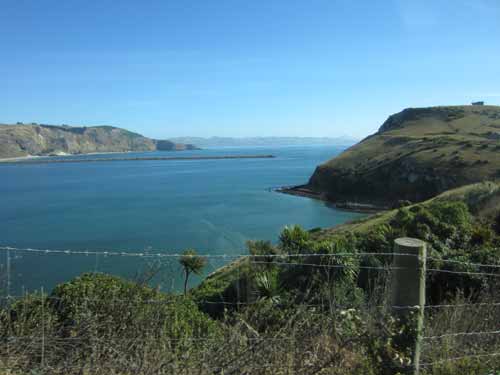
Approaching Taiaroa Head

Judy and I make a new friend.
We first got a presentation and a short film about the birds, and then got to walk up to the observatory to see them for ourselves.
There are 22 species of albatross. New Zealand has 11 of them. The Northern Royal Albatross is the third largest, with a wingspan of up to 11 feet. Generally they live 35-40 years.
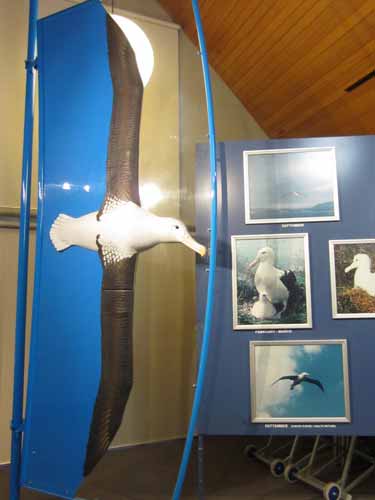
These birds can spend years at sea, never once touching land. They use what is called "dynamic soaring" which does not include any flapping or using thermals. Instead they tack back and forth, using the energy from crossing between different air masses.
Living exclusively at sea means these birds drink salt water and eat salty foods. Their kidneys would never be able to process all of it, so they have a gland that lets them get rid of salt through their nose before it enters their system. Hence they belong to the family known as 'tube nose" birds.

Victoria is a six-year-old female who flew into a power line and broke her neck.
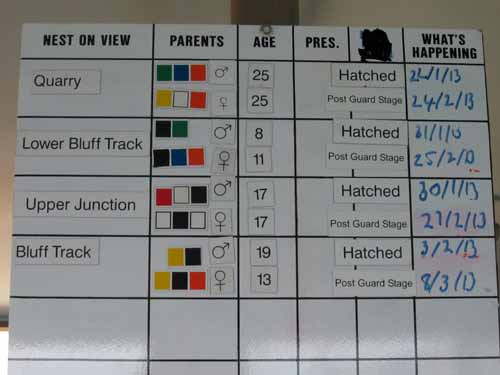
The birds are tagged so they can be tracked over their lifetimes. Color codes help to identify them from great distances.
The Northern Royal Albatross is considered endangered, with only around 30,000 of them. There are only two colonies in the world, one here and the other on the Chatham Islands (off the east coast). This colony was started in 1920 but wasn't successful until the 1930's. The birds hadn't established a colony here before then because there was too much vegetation. But then people moved in and cleared it off. But then there were too many people. Once most of them left, it became more ideal for the birds.
The number of eggs and hatches differs each year. Currently there are 26 chicks (the record is 27). There are about 200 birds that use this rookery, but a good half of them are at sea for extended periods of time, so there are never more than 100 birds using this area at any given time. Other birds sometimes join the colony from the Chatham Islands. They can also interbreed with a subspecies of the Southern Royal Albatross. This gives a gene pool an occasional boost.
These chicks are currently over 2 months old (hatched in February). The parents come back to feed their chick daily, but rarely staying longer than five minutes or so. The chicks require both parents feeding them in order to get enough food.
Aside from the stoat (a weasel-like critter), the chicks can also be killed by exposure as well as inexperienced, forgetful parents. Staff workers intervene to save as many as possible.... weighing them once a week to see that they are still getting food, spraying them with water if it gets too warm, helping the chicks to hatch, or sometimes even raising the egg in an incubator while substituting a fake one for the parent (then switching out the fake egg for the newly born chick). Some birds are fine with the help, others not so much.
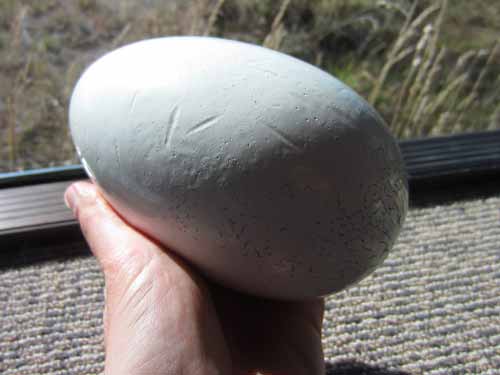
A fake egg
We walked up the large hill to the observation area. The windows were one-way glass, so we could see out but they couldn't see in.
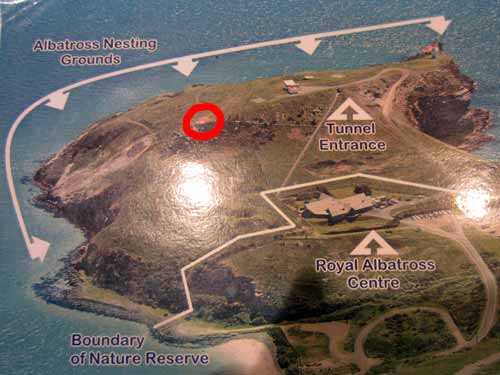
The observation area
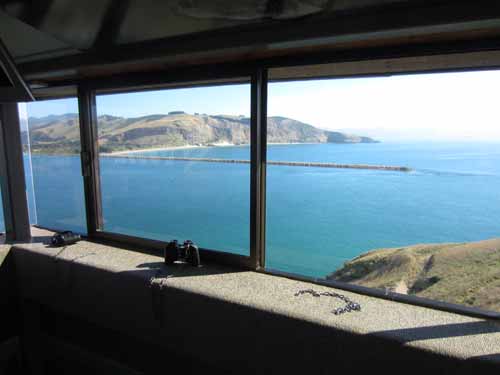
We could see three chicks. They were constantly shifting about, standing up, turning around, settling back down again.
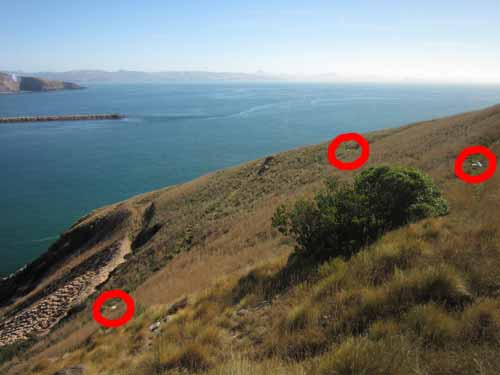
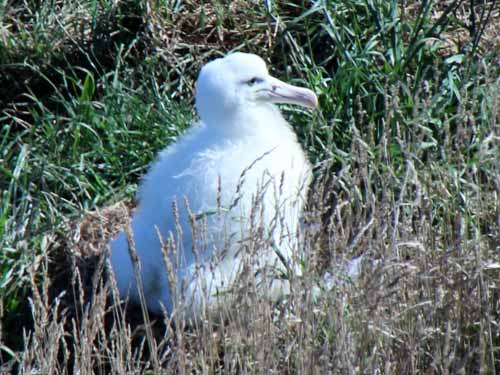
The chicks will eventually weigh more than the adult birds since all they do is sit. They balance out once they start learning to fly.
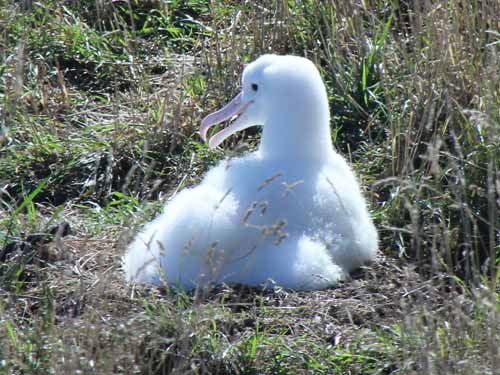
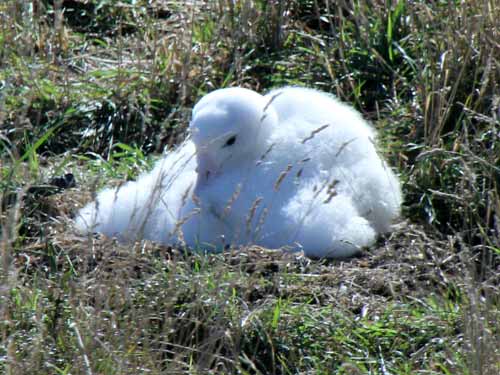
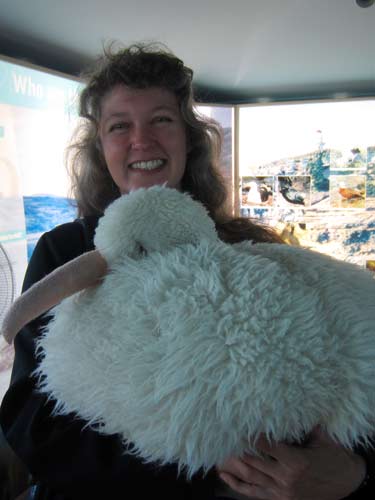
The chicks outside are about half the size as this toy (which represents a 4-month-old). It was weighted to what a real chick would weigh and it was quite heavy!
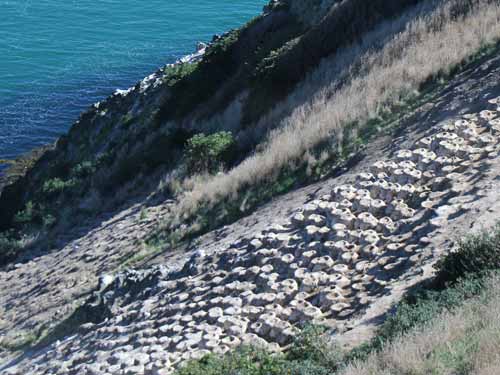
These seasonal mud nests are built by Stewart Island shags.
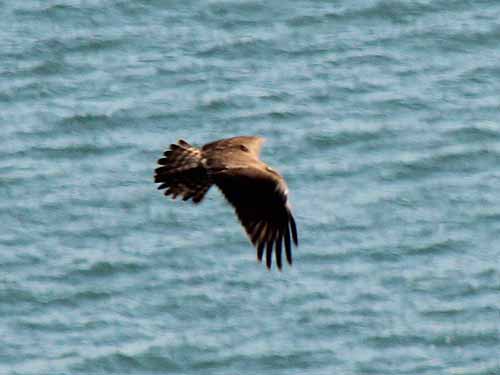
A hawk seemed to have a nest nearby as well.

A view back down the peninsula
After the tour, I found Brian and Judy waiting outside. We left Taiaroa Head and drove back down the peninsula along Otago Harbour. The name actually comes from the Moari name "Otako". Long ago there was a large settlement in the this area and this area is still considered to be special.
We stopped at the Penguin Cafe in Portobello and had lunch, again their treat. I had a veggie panini (with brie and beets) and a banana milkshake. We had a lovely table in the sun with view of the bay. Sitting at a nearby table was a friend of theirs, also named Judy. She was another adventurous soul and had canoed over here!
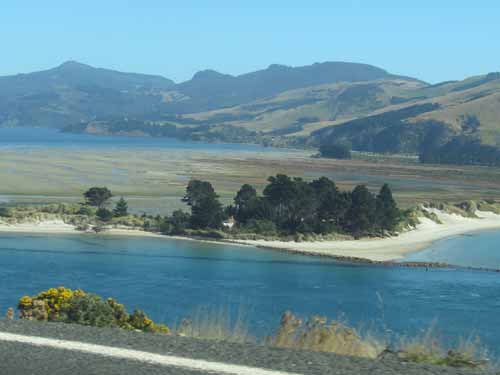
Hugh Speight's house, nestled among the trees on a sandbar
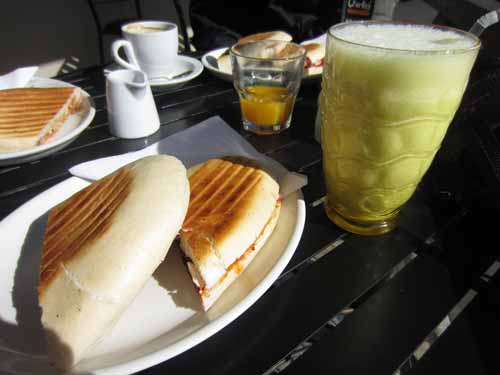
My lovely meal. It was so good, I even finished Judy's (who had ordered the same thing)!
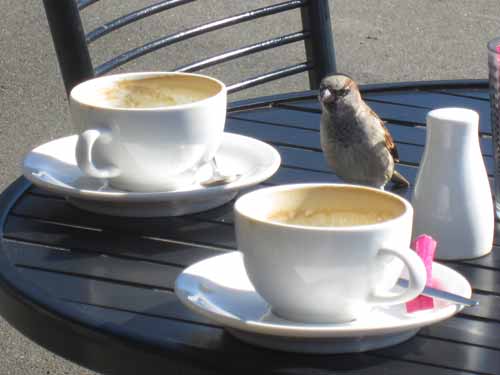
This little sparrow seemed quite perturbed to have all his waiting rewarded by... coffee!
We then crossed over to the other coast, enjoying the countryside, the beaches of Hoopers and Papanui inlets, and an incredible amount and variety of birds.
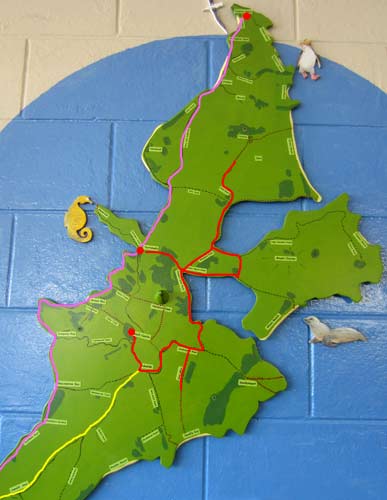
Pink was our route up to the albatross center; red was our inland excursions to Larnach Castle, and yellow was our route home.
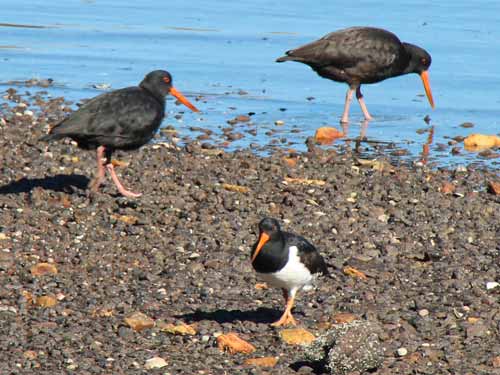
Oystercatchers
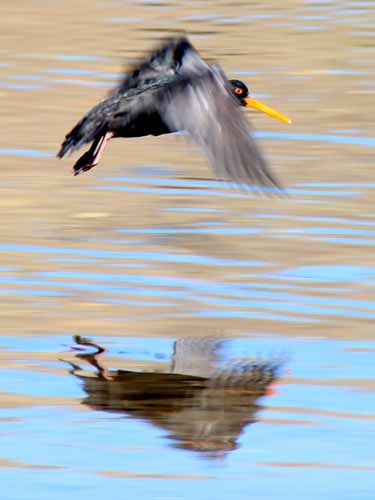

Paradise ducks
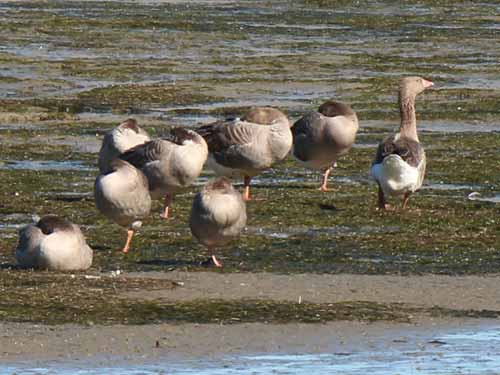
Ok, so I used to be impressed with saying a "gaggle of geese"... but did you know...
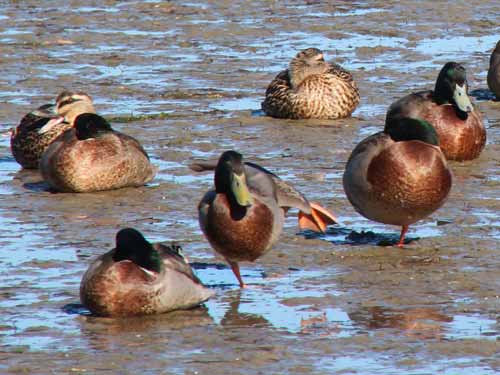
... a group of ducks can be called a brace, bunch, team, flock (in flight), raft or paddling/paddle (on water), and even a badelynge or a dover! I think I'm going with a dover of ducks. Choose your favorite!
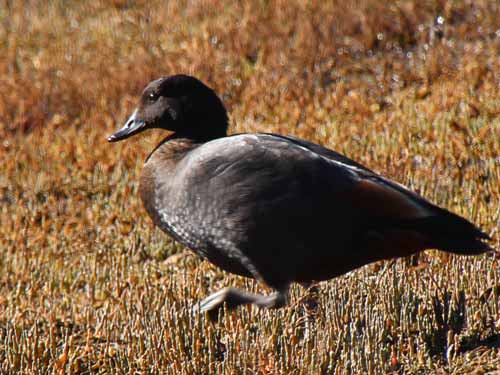
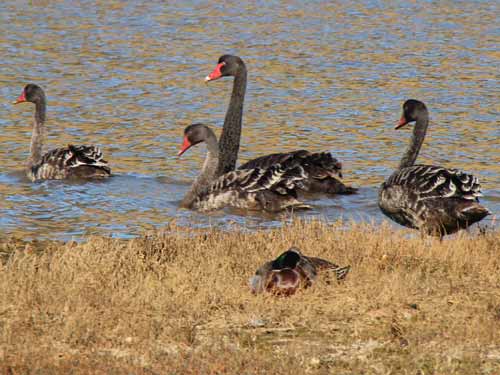
Black swans
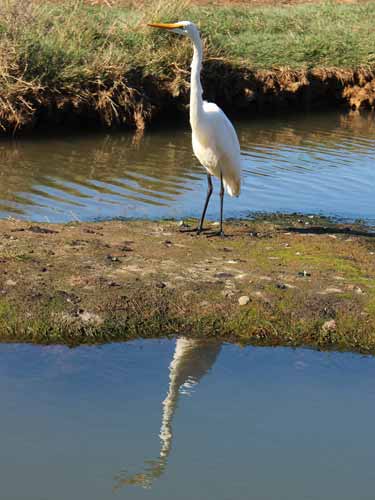
A white heron
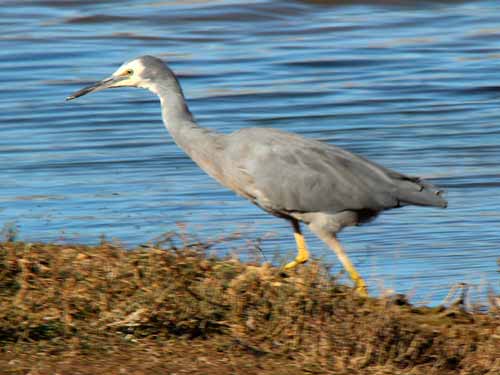
A grey heron
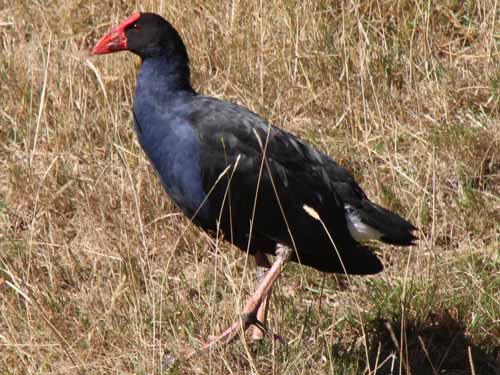
A pukeko
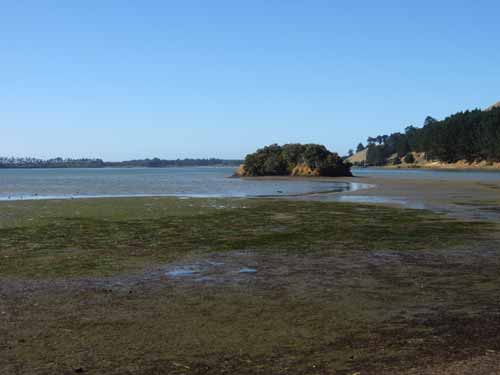
The tide was out at Papanui Inlet...

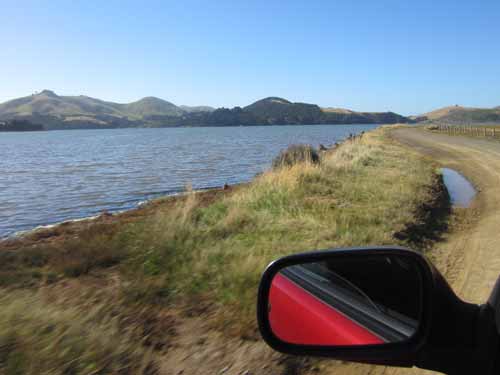
... but in at Hoopers Inlet. Apparently the bays can have different tide schedules.

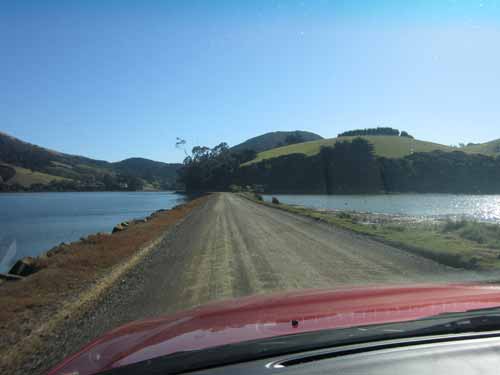
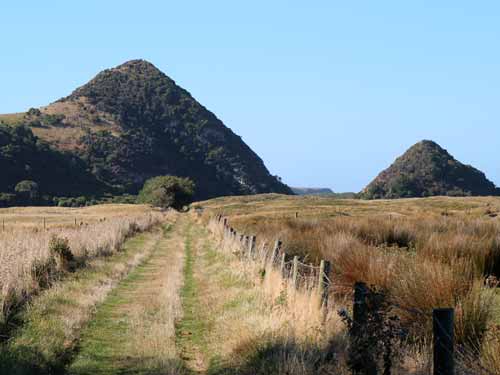
"The Pyramids" at Okia Reserve were clearly of volcanic origin.
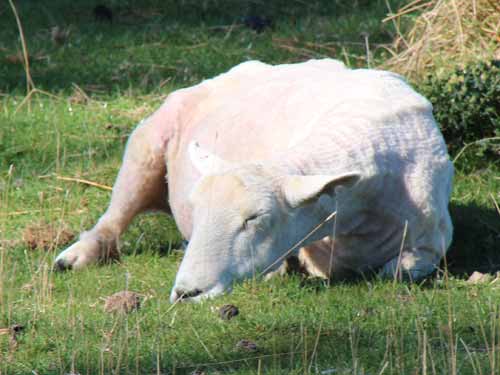
Naptime for a freshly shorn sheep

Overlooking a valley with some old lime kilns built in 1874. The Harbour Cone looms in the background.

By heating limestone, one could make lime, which was used as cement for floors, plaster, and in agriculture as a soil additive (to reduce soil acidity, improve water penetration into the soil, and help the uptake of major plant nutrients).
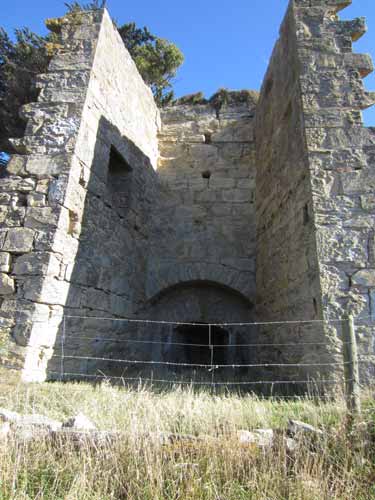
To reduce transportation costs, these kilns were often built close to the sea, their source of limestone.
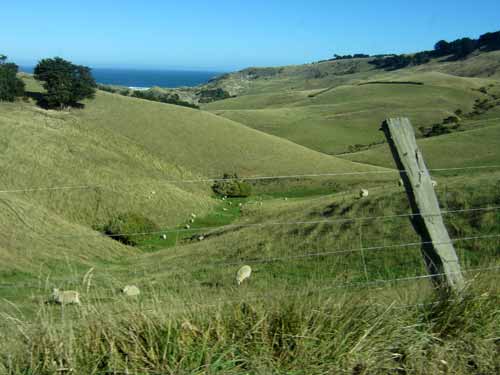
Looking down on Sandfly Bay
We took a short excursion down for a better look at Sandfly Bay...

